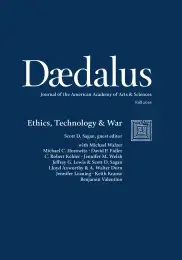From Armed Conflict to Political Violence: Mapping & Explaining Conflict Trends
Most contemporary lethal violence does not occur in conflict zones, the majority of states most affected by lethal violence are not at war, and the levels of lethal violence in many nonconflict settings are higher than in war zones. Much of this nonwar violence is organized, not random, and political in nature. A narrow focus on wars and formal armed conflicts thus obscures the high levels of everyday violence and insecurity around the world. This essay makes the case that adopting a broad understanding of political violence – including violence committed by the state and its agents, and nonphysical violence as the violation of basic rights – is essential to gain insight into the causes and consequences of, and to frame appropriate responses to, war and violence in the twenty-first century.
On December 17, 2010, Mohamed Bouazizi set himself alight in a small city south of Tunis as a violent and ultimately suicidal protest against the repeated humiliation and harassment he suffered from local officials. Street demonstrations broke out the next day in Sidi Bouzid and spread to Tunis ten days later, and on January 14, 2011, Tunisian President Ben Ali resigned. Demonstrations spread across the Middle East, from Libya to Yemen. In Egypt, President Hosni Mubarak resigned on February 11, and after a brief democratic experiment, the military seized power and drastically curtailed vocal opposition. The mid-February protests in Libya spiraled into civil war, international intervention, and insecurity and state collapse. Syrian protests between March and July 2011 also spiraled downward into civil war, which has since mutated into a regional conflict involving Iraq, Syria, the Islamic State, and various proxies, third parties, and Western volunteers and recruits. More than 140,000 people – and possibly up to 400,000 – have been killed to date.1
This synopsis illustrates the challenge in our quest to explain the causes and consequences of armed conflict, or to prevent and resolve conflicts and mitigate their effects. International relations as a discipline focuses on the “war” side of this situation – in Syria, Libya, and Northern Iraq – and starts its analysis when large-scale violence has already occurred. This, coupled with a weak understanding of how war is related to the broader backdrop of political violence (and violence in general), obscures the mechanisms and processes through which everyday “dynamics of contention” can underlie and lead to large-scale outbreaks of violence.2 An exclusive focus on war means we know little about how we get from such things as state repression or group violence to civil war – from Sidi Bouzid to Syria – and what the consequences might be for international and regional order. . . .
